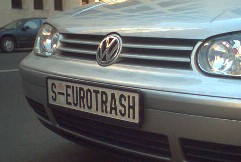
Images
of Europe in
Generational Novels
BAAS, Manchester, April 2004
Europe
has
always functioned as a counter-image in American intellectual thought
and
debate. From at least the 1920s and onward this has meant that Europe
has been
imaged by American intellectuals and writers as carrier of an element
of
Bohemianism and greater tolerance towards deviation. For that reason
Europe has
seemed well suited as a free space for young (predominantly male)
authors'
experiments with sexuality and drugs, but has also been a reservoir of
darker experience
of war and death, often coupled with cultural decadence.
Closely
related to this is the experience of Europe as an ‘old’ continent,
which
naturally triggers off a dichotomy in the imaging of it. On the one
hand there
are traditions and values here that ‘new’ America cannot offer in any
form; on
the other hand the age may carry with it a lethargy and conservatism
that can
be hard to accept for young progressive Americans.
During
the 1990s the pendulum swung towards the critical side in this
dichotomy, as
encapsulated in the signifier ‘Eurotrash’, which became a frequently
used label
for (particularly) younger Europeans, whether the American culture met
this
phenomenon in Europe, or whether the ‘Eurotrash’ came to the USA as a
form of
cultural nemesis.
